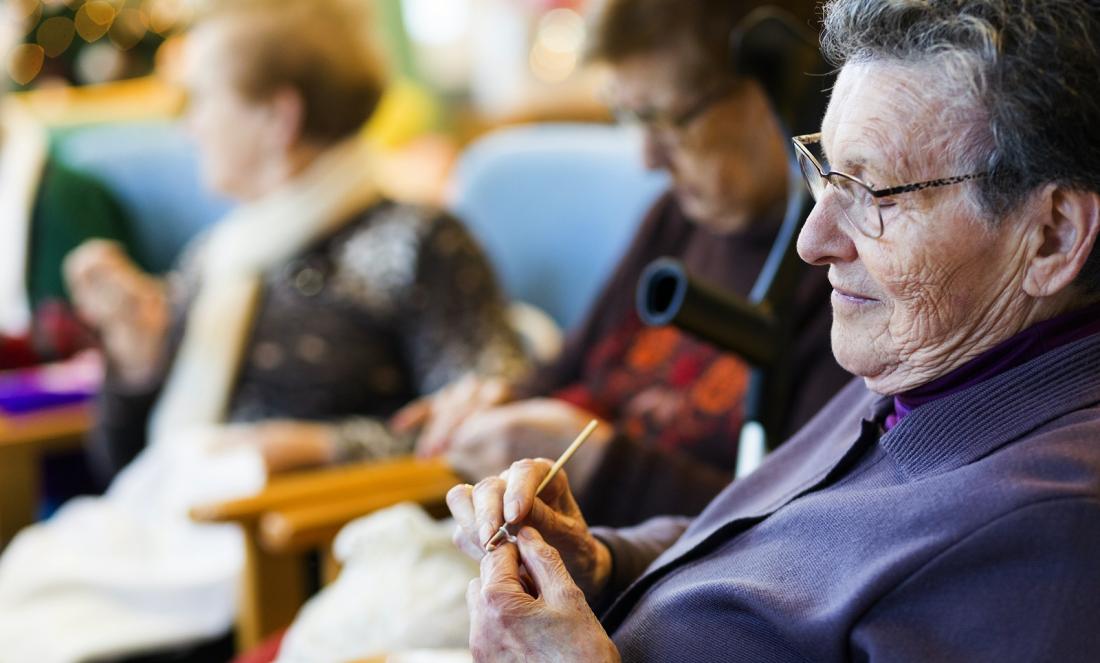
Residences and coronaviruses: when two strangers meet
A stranger has just burst onto the international scene: it is the new coronavirus Covid-19. Every day we are learning about infectivity, lethality and other parameters with constant updates. There are countless publications on this virus and, despite our growing knowledge of its pathogenesis, this new data gives us the feeling that we are always one step behind it.
The news media devote all their time to the coronavirus pandemic. Among the news items on the TV news list, those referring to the numerous deaths that are occurring in residential homes for the elderly are particularly noteworthy. This is where the second unknown to society arrives: the nursing homes.
In our environment, we only know about the residences if we work in the gerontological field or if we have a family member admitted to one of them. Moreover, we live in a culture that has taken on the admission of an elderly person into a home in two ways: as an abandonment or as a failure. This view makes caregivers avoid as much as possible the admission of the relative in these centres because it would mean their failure as caregiver and would generate the feeling of having abandoned the relative in question. The cultural pressure means that, in the end, people who go into a residential centre do so in conditions of dependence, fragility and vulnerability, both from a physical and a psychological and social point of view. As a consequence, the usual profile of the residence user is a very old person, with some degree of dependency and with mental or social problems that make their care at home very complex.
Society's sensitivity to the elderly is only comparable to that of children, and when two such unknown agents as the coronavirus and residences combine, conjecture, assumptions and sensationalist news begin. The media are determined to report on the deaths by Covid-19 in homes with raw data, without seeking an explanation to those numbers, they interrelate them in such a way that the viewer has to interpret the news with some vague criteria about two subjects that are totally unknown.
According to the deputy of Social Action of the Provincial Council of Bizkaia, in the residences of the province have died during the month of March 182 users, of which 33 were diagnosed with Covid-19. Following the data from the Provincial Council, in March 2018 181 people died in homes, in the middle of a wave of seasonal flu. Only in January 2016, in these same centres, 250 people died. These numbers do not mean that the coronavirus is less dangerous than other infections, so to avoid falling back on raw data we are going to put them into context.
The profile of a frail residential user has previously been cited, which means that any type of event can make the elderly person sick, increase their dependency and even die. It is not strange that, in the face of infections that in the rest of the population would not cause major problems, an elderly and vulnerable person suffers from septicaemia leading to death, or that in the face of a hip fracture a series of syndromes are triggered with the same result of death.
We might think that by overprotecting the elderly we would avoid these catastrophic processes. However, the residential model that is being promoted goes in another direction. Life in a home must preserve the continuity of the elderly person's life project, it must ensure the maintenance of their wishes and objectives, even taking risks to achieve them.
A model closer to community housing than to a biomedical and hospital model is being imposed. For the same reasons, it becomes so difficult to protect them from the mutual contagion of the coronavirus in favour of maintaining a full life within an institution. In the homes, activities are promoted among users such as games, handicrafts, workshops and group exercises, which means that the elderly are very close to each other sharing objects that can transmit infectious agents. Another way of physical contact between residents occurs when they help each other walk, stand up or when they show mutual affection with caresses and kisses. It should be noted that highly dependent people also require direct contact with their carers to get up, walk, use the toilet, etc. and this is another potential source of transmission of micro-organisms.
That said, if we add up the factors of vulnerability of older people to the ease of spread of an infection in an institution, we have as a result epidemics that ravage homes. This does not mean that in these centres the staff lacks knowledge or that the elderly are not protected; in fact, it is the professionals of the homes in Bizkaia who have managed to keep the number of deaths caused by Covid-19 at 0.3% out of a total of 10,700 users. However, the media puts the focus of suspicion on the residences, while raising the status of heroes to the health care workers in the hospitals.
To change these perspectives we must bring the residences closer to society, make them a valuable part of people's lives, and thus increase knowledge and trust in these centres and their professionals. Let us open the debate on the ideal residential model based on person-centred care, on the biomedical model or on a hybrid of both. But above all, let us prevent ignorance and sensationalist news from driving people in need of care away from residential centres.
Original source: Campusa UPV/EHU

Add new comment